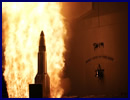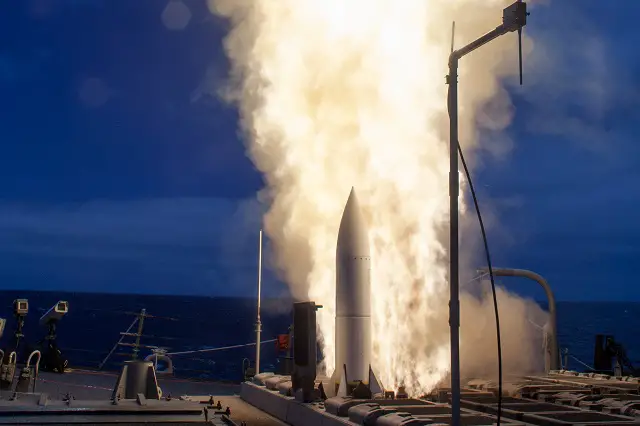The U.S. Navy executed a successful flight test of the surface-to-air
Standard Missile-6 (SM-6) at White Sands Missile Range, Aug. 14. During
flight test "Juliet," the Navy examined the missile's ability
to intercept a subsonic, low altitude target over land. Juliet is one
of 10 follow on operational test and evaluation (FOT&E) events planned
for SM-6's missile performance and demonstration. |
"This
event demonstrated SM-6's ability to detect and engage a slow moving
target in the presence of complex land clutter," said Jim Schuh,
anti-air warfare missiles technical director at the Johns Hopkins University
applied physics lab, which is among the Navy's SM-6 partners. "It
is another victory for this very versatile weapon."
The SM-6 provides an over-the-horizon engagement capability when launched
from an Aegis warship. It uses the latest in hardware and software missile
technology to provide needed capabilities against evolving threats.
"This is an important achievement for Naval warfare," said
Capt. Michael Ladner, program executive office, integrated warfare systems
3.0 program manager. "SM-6 is undoubtedly the most advanced anti-air
missile the Navy has ever produced and delivered to our Sailors."
The SM-6 is the sixth variant of the Standard Missile family developed
for the Navy with Raytheon Missiles Systems. Last June, Raytheon was
awarded a $275 million contract modification covering SM-6's all-up
round production and its spares. The SM-6 program has been in development
for seven years and achieved initial operational capability in November
2013. It is now undergoing FOT&E, which is projected to be completed
during the second quarter of Fiscal Year 16. |









